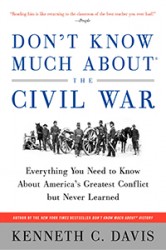War and Remembrance (Revised from May 25,2014 post)
But, in a larger sense, we can not dedicate, we can not consecrate, we can not hallow this ground. The brave men, living and dead, who struggled here, have consecrated it, far above our poor power to add or detract.
–Abraham Lincoln, Gettysburg Address
The souvenir is more than fifty years old. It is a wooden toy revolver. The legend stamped on the barrel reads, “JULY 1, 2, 3, 1863 Gettysburg, Pa.”
I keep it nearby, on my desk—a reminder of what it felt like to be a nine-year-old boy standing for the first time in the fields at Gettysburg. I was certainly too young to understand what the war was about then and the details of what had happened in those fields and rock-strewn hills 100 years earlier. But I certainly was old enough to know that something special had happened there. I probably didn’t understand what Lincoln’s Gettysburg Address meant. But I felt in my young soul that I was on the ground he called “hallowed.”
The approach of another Memorial Day, as always, comes with thoughts of duty, honor, courage, sacrifice and loss. The holiday, the most somber date on the American national calendar, was born in the ashes of the Civil War as “Decoration Day,” when General John S. Logan –a-veteran of the Mexican and Civil Wars, a prominent Illinois politician and leader of the Grand Army of the Republic, a Union fraternal organization –called for May 30, 1868 as the day on which the graves of fallen Union soldiers would be decorated with fresh flowers.
“We should guard their graves with sacred vigilance. All that the consecrated wealth and taste of the Nation can add to their adornment and security is but a fitting tribute to the memory of her slain defenders. Let no wanton foot tread rudely on such hallowed grounds.”
General John S. Logan’s General Order Number 11 (May 5, 1868)
Pointedly, Logan’s order was seen as a day to honor those who died ending slavery and opposing the “rebellion.”
Logan was inspired by the tradition of decorating graves by the women of Petersburg, Virginia. His wife told him of this ritual in March 1868 and Logan made his call for a “Decoration Day” that May. The events leading to this ritual in Petersburg are detailed in Chapter Two of THE HIDDEN HISTORY OF AMERICA AT WAR.
It was with that sense of war and remembrance of the Union war dead that families of Confederate soldiers were kept out of Arlington National Cemetery –a cemetery built on land confiscated during the war from Confederate General Robert E. Lee of Virginia. In response, Confederate states began to mark their own “Decoration” or Memorial Days.
From its beginnings, Decoration Day or Memorial Day, brought division. We can do better.

The Hidden History of America At War (Hachette Books Random House Audio)

